Can-Am series & 24 Hours of Le Mans & More
McLaren’s exceptional design prowess and innovative spirit shone brilliantly in the fiercely competitive arena of sports car racing. Just as the Can-Am series was gaining immense popularity among fans in Canada and the United States, McLaren’s new cars made a powerful statement by achieving second-place finishes twice and third-place finishes twice in the span of six races. The year 1967 marked a turning point as McLaren cars dominated the competition, clinching victory in five out of six races. This remarkable streak continued into 1968, with McLaren securing first place in four out of six races. However, it was in the following year that McLaren’s dominance reached unparalleled heights, as their cars proved invincible, conquering victory in all 11 races. Incredibly, in two of these races, they achieved an unprecedented 1–2–3 podium sweep.
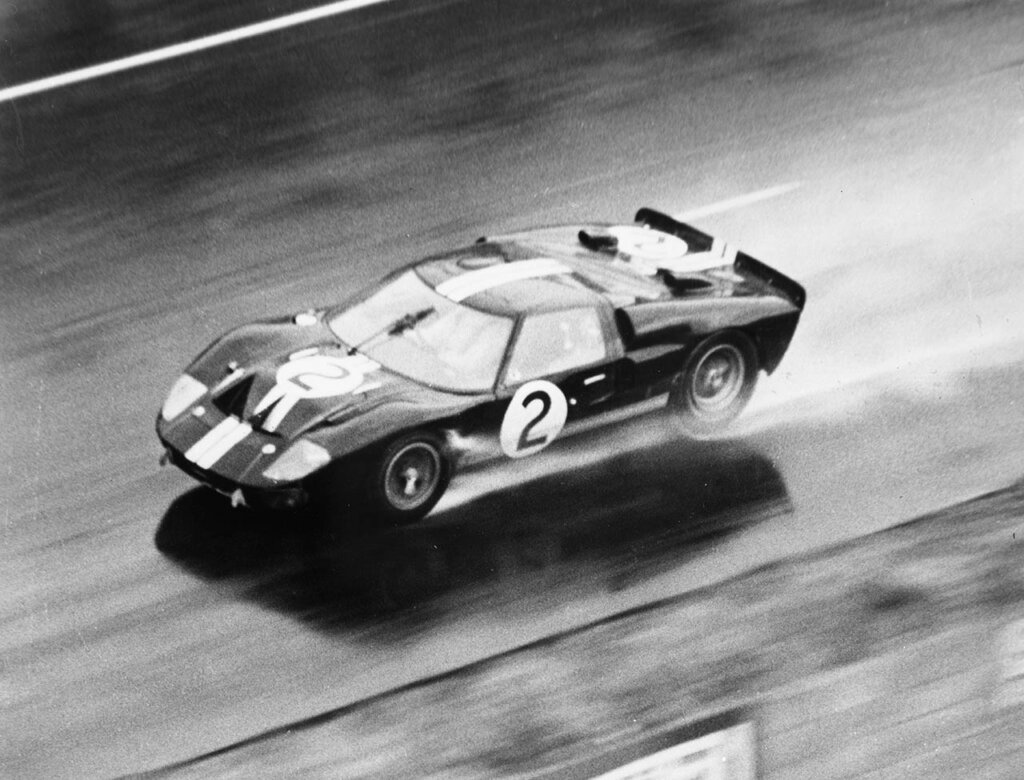
Source: Ford Media Center
In 1965, Bruce McLaren and his co-driver Ken Miles took on the challenging 24 Hour Race at Le Mans behind the wheel of a Ford GT40. Impressively, their car surged to the lead after completing 45 laps, but alas, their promising run came to an abrupt halt as gearbox failure forced their retirement from the race. However, the following year, in 1966, McLaren teamed up with co-driver Chris Amon to secure a resounding victory at Le Mans, racing in a Ford GT40. Their achievement was part of an extraordinary Ford performance, resulting in a triumphant 1-2-3 finish. Although it’s worth noting that the Ken Miles-Denny Hulme entry technically crossed the finish line first, it had traveled a shorter distance due to the unique Le Mans-style start, ultimately granting McLaren and Amon the well-deserved victory.
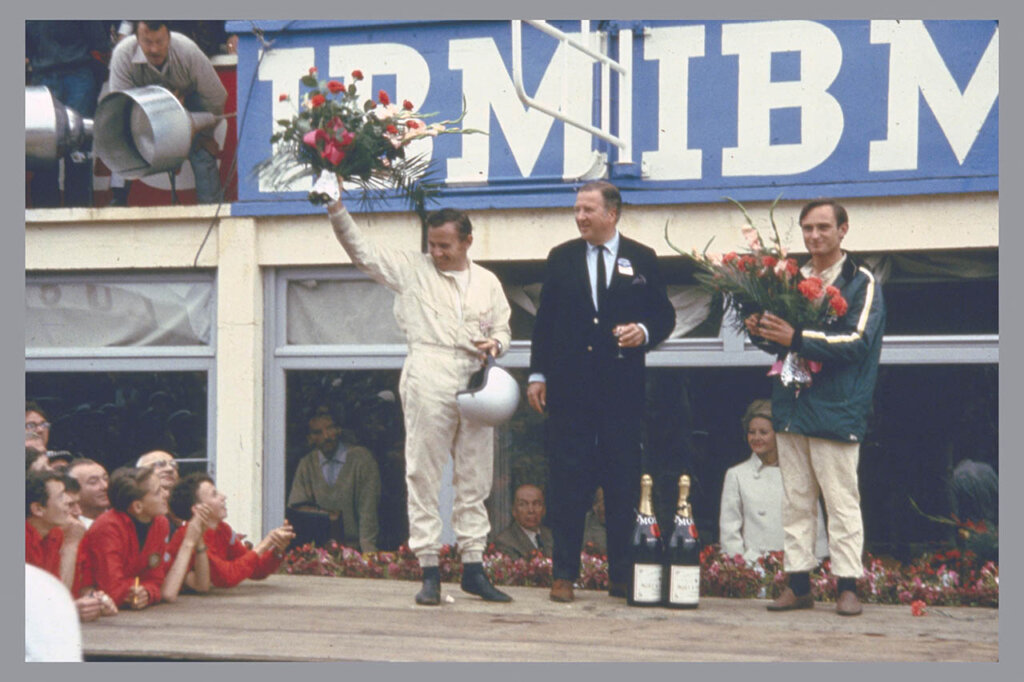
Source: Ford Media Center
Career as an Engineer
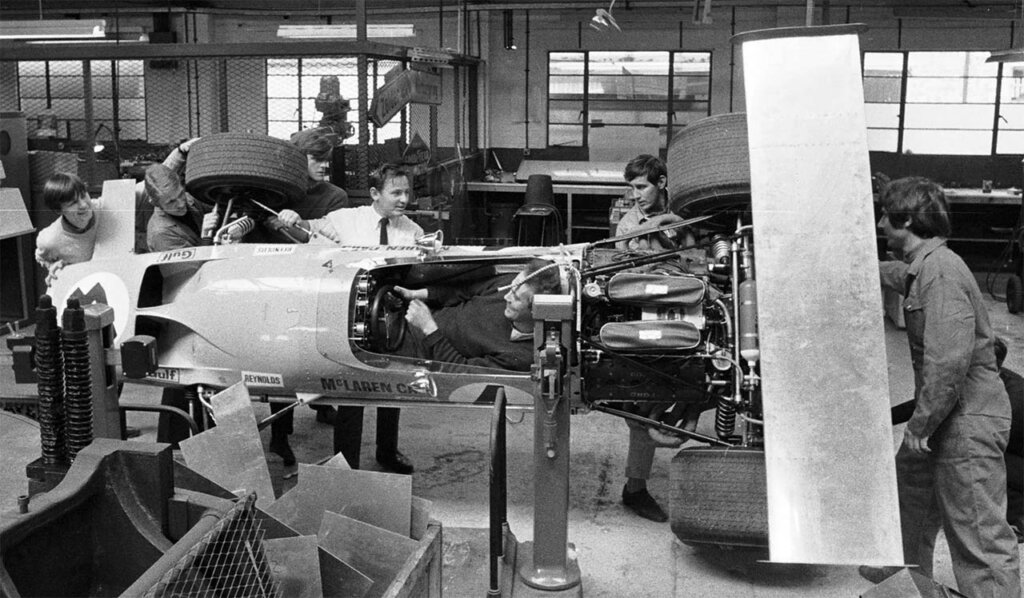
Although Bruce McLaren was a legendary driver with his impressive racing victories, his enduring legacy lies in his multifaceted talents as an analyst, engineer, and manager. In the early days of McLaren’s involvement with sports cars, an incident occurred during one of his test drives that showcased his exceptional analytical skills. As he exited the pits, McLaren noticed an issue: the fuel filler access door on the car was oscillating up and down as he accelerated. This phenomenon contradicted conventional aerodynamic wisdom, which suggested that the door should have been pressed more firmly into place as the car’s speed increased. However, what McLaren observed was quite the opposite – the door bounced more vigorously with higher speeds. In a moment of frustration that soon transformed into inspiration, he made a pivotal decision. Bringing the car back into the pits, McLaren promptly fetched a pair of shears and began cutting away the bodywork located behind the radiator. Once back behind the wheel, he immediately commenced turning lap times that were notably faster than before. This ingenious modification not only improved the car’s performance but also demonstrated McLaren’s innate ability to think outside the box and optimize his racing machine. From that session came the “nostrils” that have been a key McLaren design feature, including in the McLaren P1 road car.
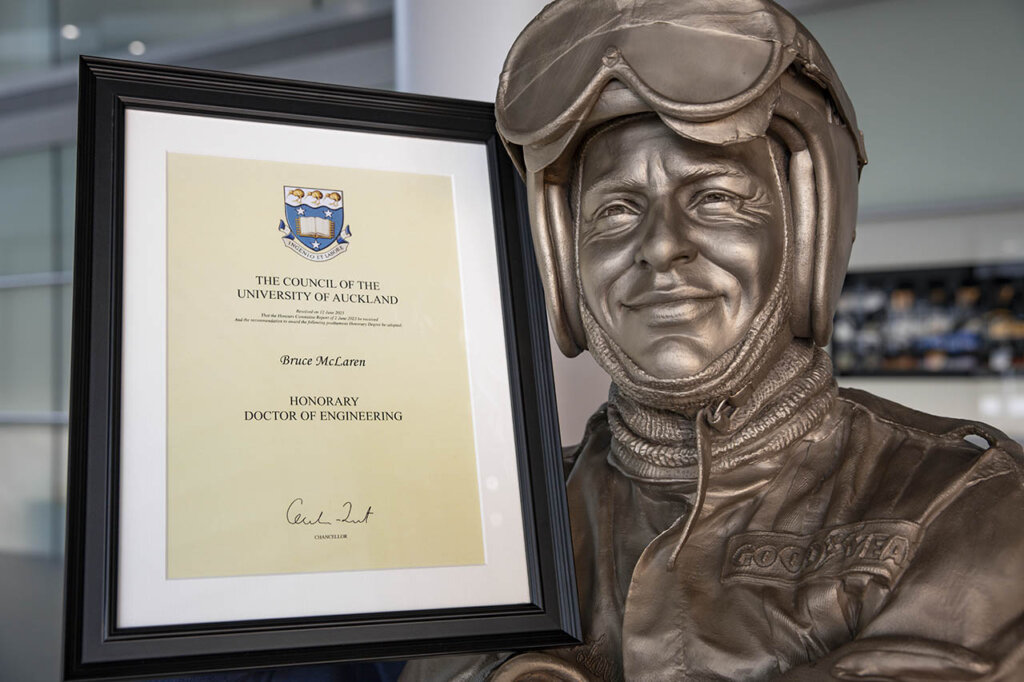
Source: McLaren Press Room
Untimely End & Legacy
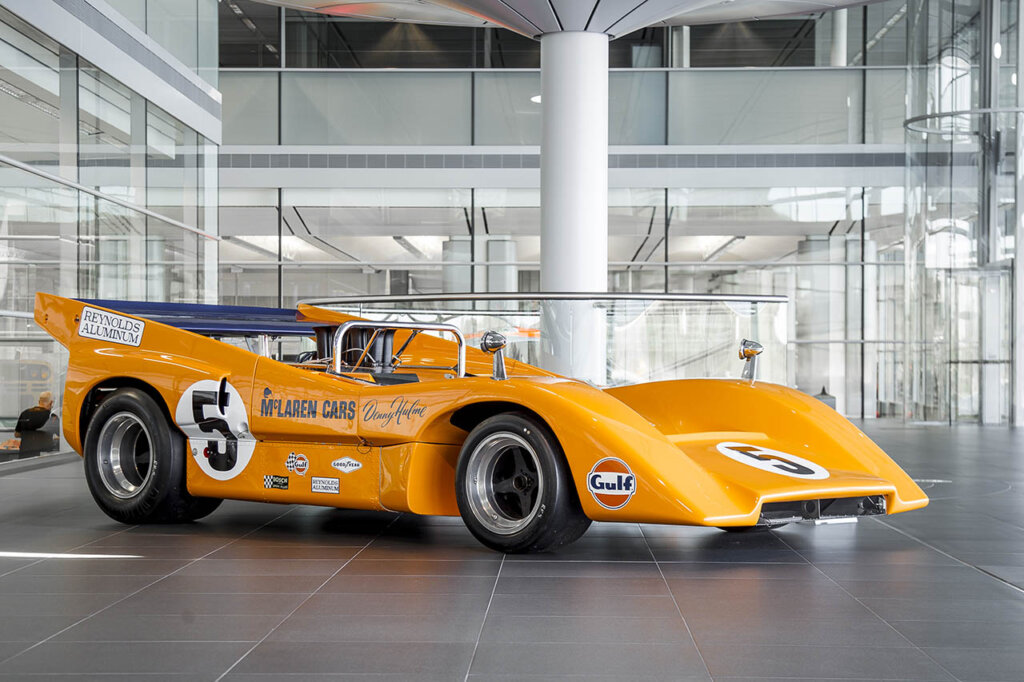
Source: McLaren
Tragically, Bruce McLaren died at the age of 32 in a fatal accident during a Can-Am car test run. The incident occurred on the Lavant Straight, just prior to the Woodcote corner at the Goodwood Circuit in England, on the fateful day of June 2, 1970. McLaren had been actively testing his innovative McLaren M8D when a critical mechanical failure unfolded. The rear bodywork of the car unexpectedly detached while he was traveling at high speeds, resulting in a catastrophic loss of aerodynamic downforce. This sudden destabilization led the car to spin out of control, veer off the track, and tragically collide with a bunker, which was being used as a flag station at the time.
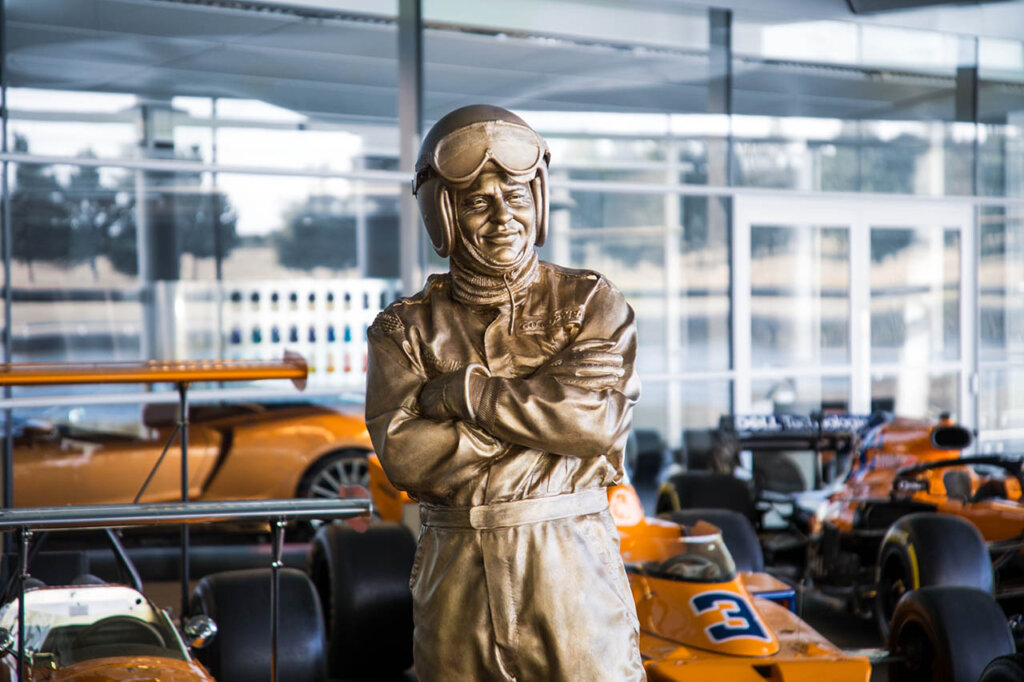
However, Bruce McLaren’s life and legacy goes beyond the realm of motorsport. After his death, McLaren was honored with many motorsports awards and commemorations, displaying his contributions in the sport. Despite his tragically early passing, Bruce McLaren’s impact endures through the continued success of the team that bears his name and the countless individuals he inspired to push the boundaries of speed, technology, and human achievement. His story reminds us that true greatness is not only measured in victories but also in the enduring legacy that one leaves behind, and in that regard, Bruce McLaren’s legacy is nothing short of legendary.
“To do something well is so worthwhile that to die trying to do it better cannot be foolhardy. It would be a waste of life to do nothing with one’s ability, for I feel that life is measured in achievement, not in years alone.”
Bruce McLaren









